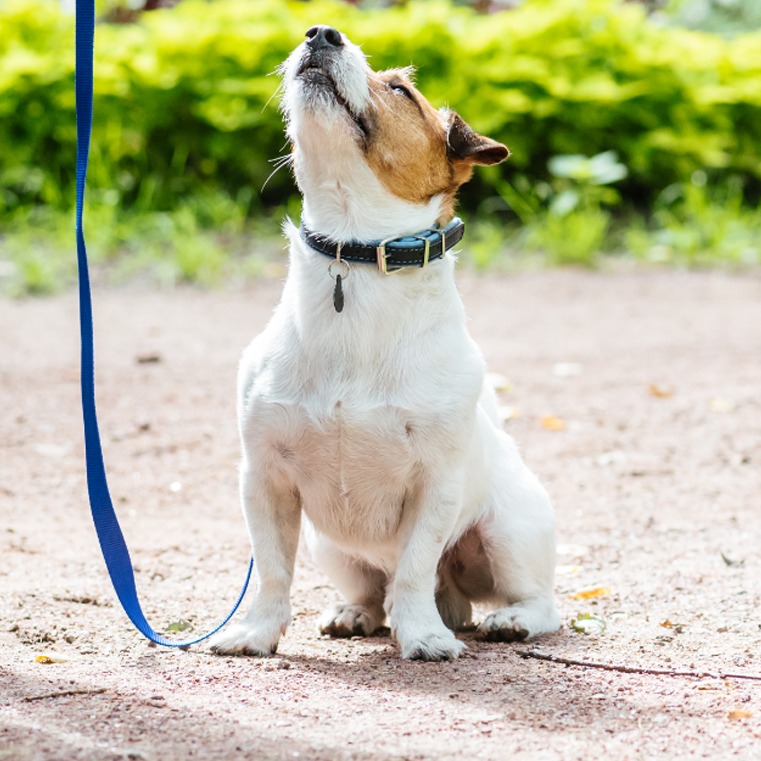5 Training Lessons That Could Save Your Dog’s Life
There are many reasons to train your dog. You do it so that they know how to have good manners at home and with other dogs. You do it to build the relationship between the two of you. But, perhaps the most important reason of all: you do it because it keeps them safe!
In this article, we’re going to cover 5 training lessons that are essential to your dog’s safety. Once they’ve mastered these cues, you can certainly go back to teaching fun tricks like shake and roll-over!
#1: Recall
No surprise, here. Recall is one of the most important skills that you can teach your dog. Your dog may be pretty good at recall already, but here are a few tips to make sure it’s absolutely flawless:
- Use amazing treats. We’re talking, the best, most irresistible treats that your dog can’t possibly say no to. Maybe it’s unseasoned boiled chicken or steak or their favorite top-of-the-line treats. Make sure your dog only receives these treats when responding to recall so that it becomes their favorite trick.
- Practice in new environments. Your dog may be good at recall in familiar places, but new environments and added distractions will challenge their focus and reinforce good habits.
- Don’t punish, practice. Dogs who don’t come immediately aren’t being stubborn. They’re simply struggling to overcome their natural curiosity and impulses. Punishing them will create negative feelings about coming to you, so when the recall training isn’t going well, take a break and commit to practicing more often when you’re both calm.
#2: Freeze
Sometimes in emergency situations, you don’t want your dog to come to you, but rather stay where they are. Maybe they’ve crossed the street without you and you need them to freeze until you can reach them.
Freeze is a life-saving skill that is really as simple as teaching the “down” and “stay” command from a distance. You can start out by rewarding your dog for a basic down/stay while you’re very close to them and then gradually adding distance and distractions to reinforce the behavior. You may want to introduce a special word, such as “freeze,” or a hand signal that your dog can more easily hear and see from a distance.
#3: Leave it
“Leave it” is an important skill for food-motivated dogs, especially if they don’t see the difference between food and medication, sharp objects, and other potentially harmful items.
Teaching your dog to leave everything on the ground is a straightforward task that will take some patience.
First, you’ll want to put a treat on the floor with your hand over it. Your pup will probably try to nuzzle or paw their way to treat, and you may want to wear a gardening or snow glove to protect your hand. Eventually, Fido will stop trying, and in that moment, you’ll say “leave it” and give them a different treat than the one that’s on the ground.
This process teaches them that, while they won’t have access to the treat on the ground—this isn’t a waiting game—they can get something even more enticing when they stop trying. With enough repetition, you should be able to place a treat on the ground without covering it. And, once your pup masters that level, you can start introducing other items that they tend to go for, such as pieces of paper or kitchen scraps.
#4: Wait
Ever had your doggo try to bowl you over as you open the car door in the parking lot of the dog park? Yeah, it’s happened to most dog owners! Getting this behavior under control will increase your dog’s safety in public places.
It’s easiest to start training this trick at home. What you’ll do is leash up your dog and approach the front door as if you were leaving. Instead of allowing them to push their way past you, have them sit and stay while moving your hand towards the doorknob. If they stay still, say “wait,” and give them a treat but don’t open the door. Instead, walk them away from the door, and then re-approach to start the process over again. Gradually increase the difficulty by turning the knob, then opening the door and closing it quickly. Eventually, your dog should be able to sit and wait in front of the door while it’s wide open.
Here’s how you can teach it in the car: with treats in hand and your dog in the backseat, crack open the door and give them the “wait” command. If they are able to follow your instructions, toss one or two treats to them through the crack. Close the door and start over, gradually increasing the width of the opening.
One way to make training this cue in the car even easier is by using BreezeGuard Screens! With these sturdy window coverings, you can give your dog their verbal cue and treats without ever having to open the door. These screens will also keep your dog safely in the backseat no matter where they are in their safety training.
#5: Wild animal training
No matter where you live, putting your dog through wild animal training can be life-saving. In some areas, it could teach your dog not to take off after prey animals like deer or rabbits. In other parts of the US, this could cover snake safety to prevent your dog from coming snout-to-snout with a rattlesnake or other venomous animal. In fact, the ASPCA estimates that there are over 100,000 cases of venomous snake bites in domestic pets every year.
Because the stakes are so high, and the natural temptation in dogs to chase and investigate so strong, it’s best to undergo these kinds of training lessons in a class led by a certified instructor. Look into your local options to sign your pup up for this important training!

